
embodie
embodie is a pain management app designed to improve the relationship and exchange of information between cancer patients and their care team.
App · Identity

1 out of 2 children born today will develop cancer at some point in their lifetime.
A Growing Problem
In 2007, the American Society of Clinical Oncology published a study that projected critical shortfalls in oncology services by 2020. In 2014, a follow-up analysis concluded that by 2025 demand for oncology services will grow by 40%, while the supply of those services will only grow by 25%.

NOSTALGIA FOR FAMILIAR CARE
It used to be that your family doctor lived around the corner and you knew them by their first name. Personal relationships grew strong in a close community. Fast forward to today and things like bedside manner and personal rapport are no less valuable but are seen as less of a priority in exchange for the increasing need of immediacy to serve a growing and aging population.

Yesterday's tools in the digital age
Despite the many technological advancements in modern medicine to diagnose and treat cancer, the tools we use to understand the severity of pain felt have hardly evolved beyond the paper form. The two most common tools used today are the 0-10 pain scale—convenient, but lacking in actionable data—and the McGill Pain Questionnaire—more informative, but complex and labor intensive.

How can we expand our cancer pain management services to meet a growing demand with fewer resources?
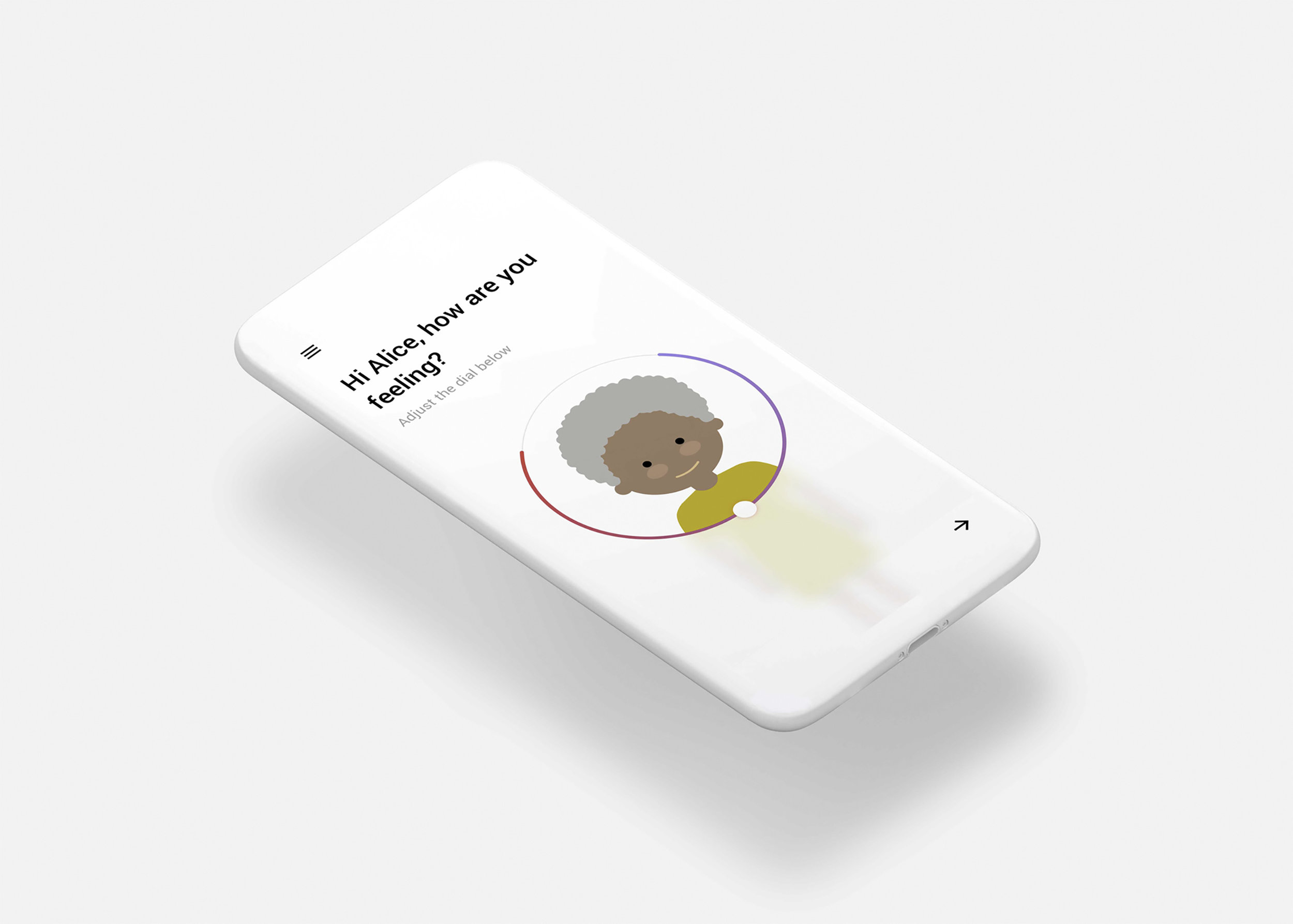
Introducing Your Virtual Ally
Designed as your digital counterpart, embodie makes the monitoring of your health simpler, more accessible and more informative for you and your care team. Programmed to check in with you on a routine basis, embodie inquires about your current health status and any concerns you may have, painting a detailed and holistic picture of your health over time.

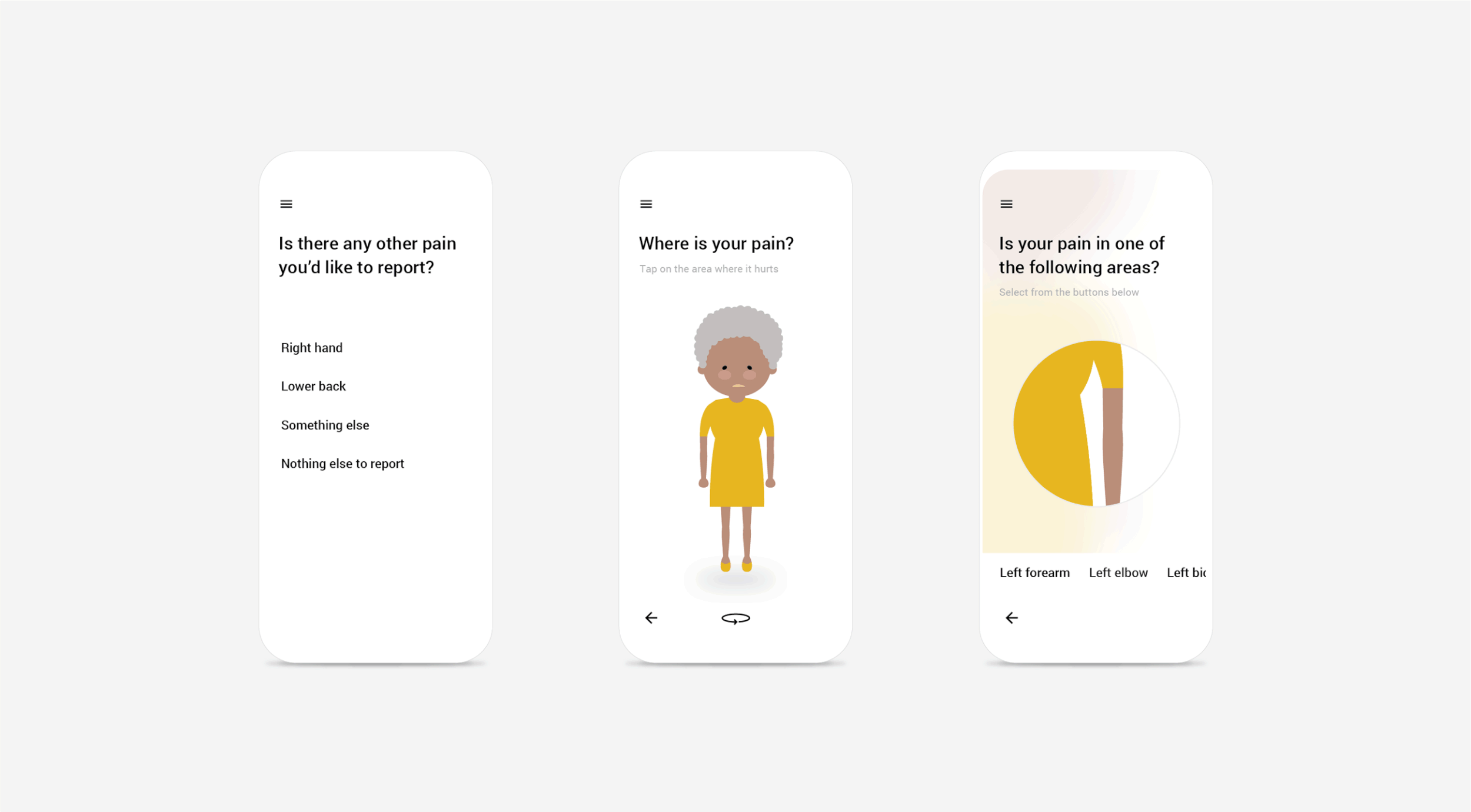
Building a Shared Vocabulary
Pain is a visceral experience, which can complicate the way it is communicated. A key learning from speaking with medical staff is that people frequently struggle to express their pain in ways that are informative. embodie helps bridge this divide by making one's experience of pain visual while complementing it with a shared vocabulary.
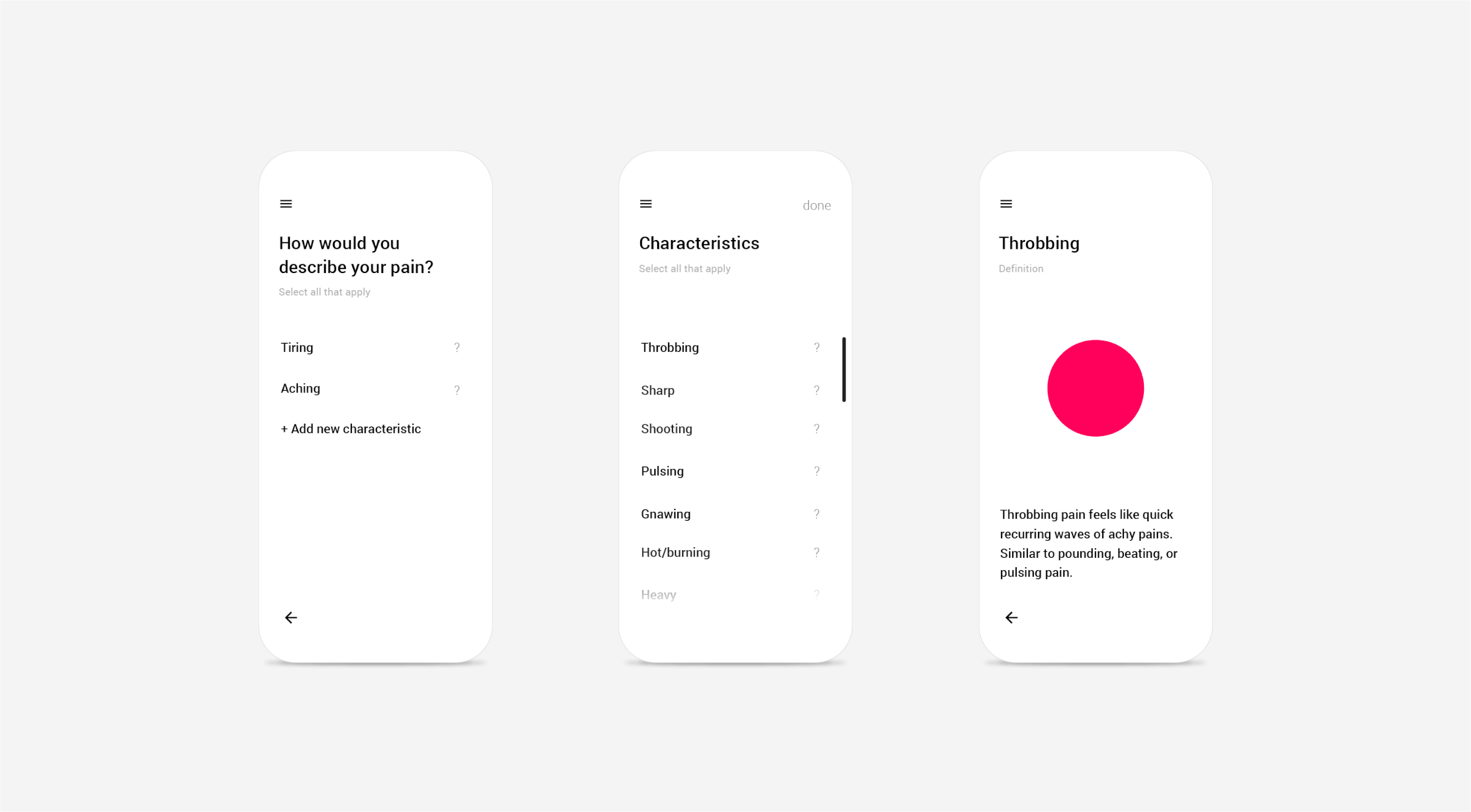
Prioritizing Quality of Life
Quality of life is an important metric to measure the success of any treatment, but when dealing with end-of-life care it's paramount. embodie prioritizes this by focusing on a user's ability to take part in the particular activities that give him or her joy after each survey they complete.
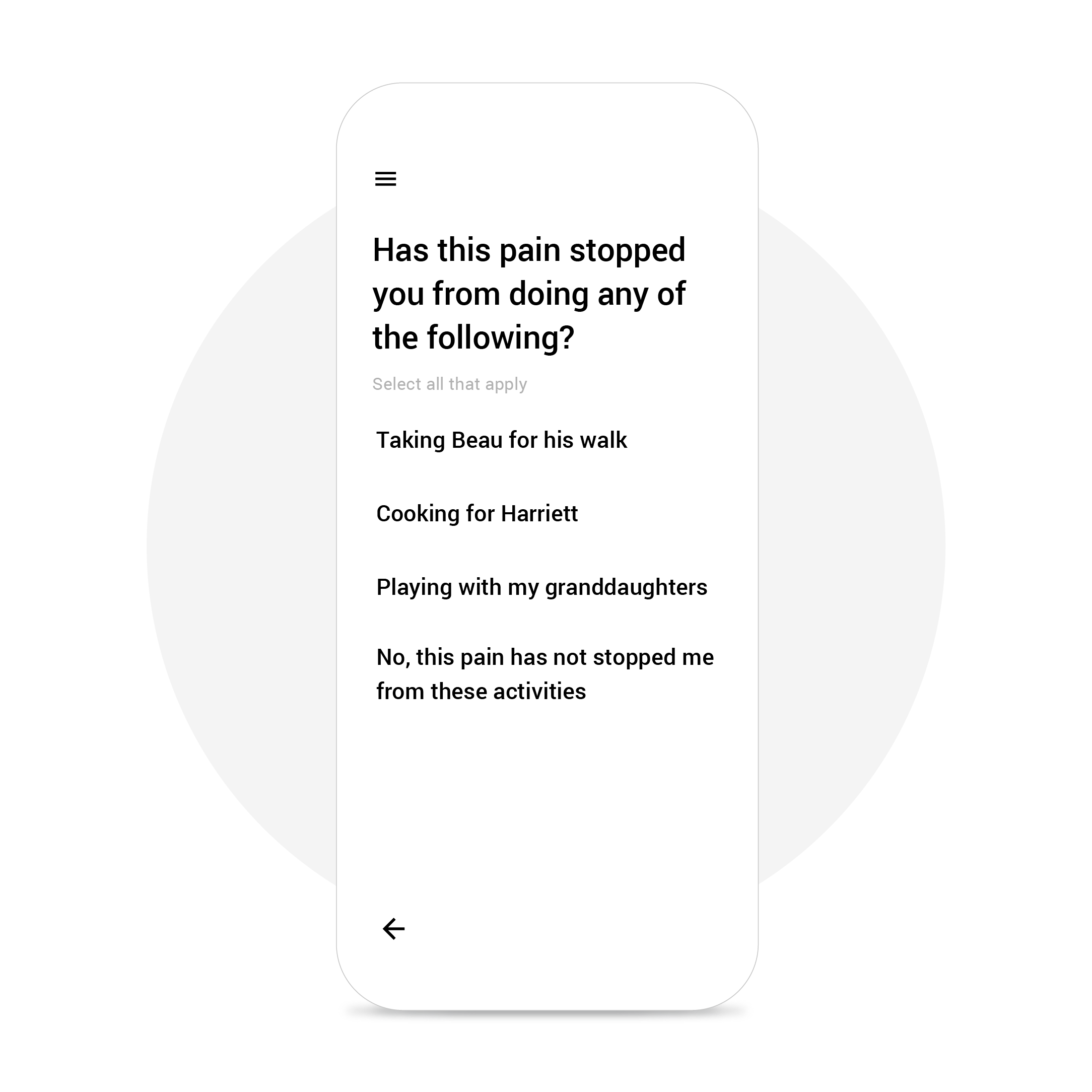
Looking Ahead
embodie not only helps communicate severity of pain, but also information relating to a person's care. Prior to an appointment, embodie reaches out to patients to learn about their top concerns and other pieces of relevant information, helping them to orient their thoughts ahead of their visit while providing doctors with advanced insight to have a more informed discussion during their consultation.

A Custom Experience
embodie offers a customizable experience to help impart ownership and instill a sense of intimacy between it and its users.

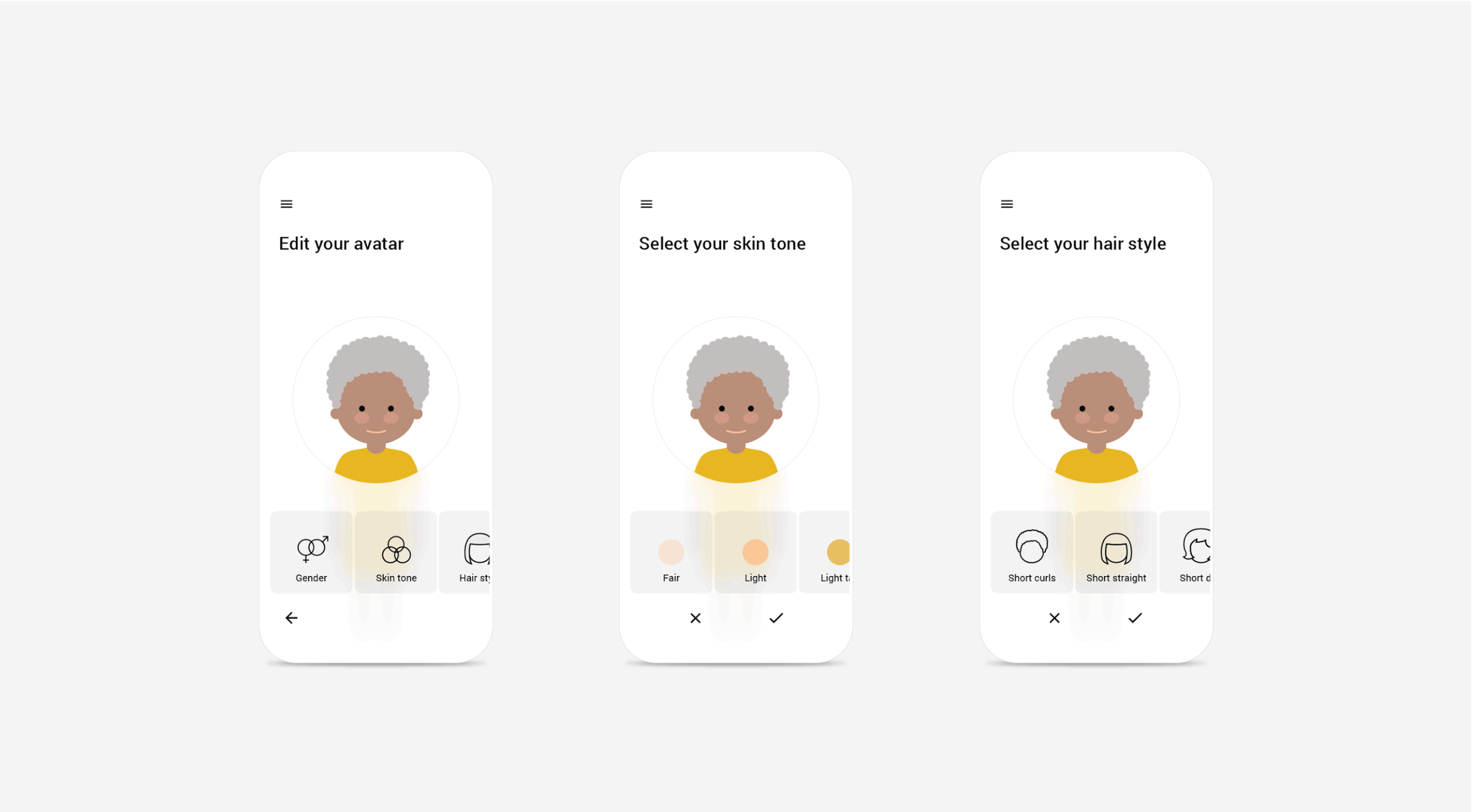
Getting to MVP
embodie's design grew from a human-centered design approach, based on understanding the underlying needs of its users. Over the course of several months, embodie's design team interviewed patients, clinicians, nurses and caregivers, conducted literature reviews, competitive market analysis, and early-stage prototype user testing to arrive at a product that works for both patients and providers.



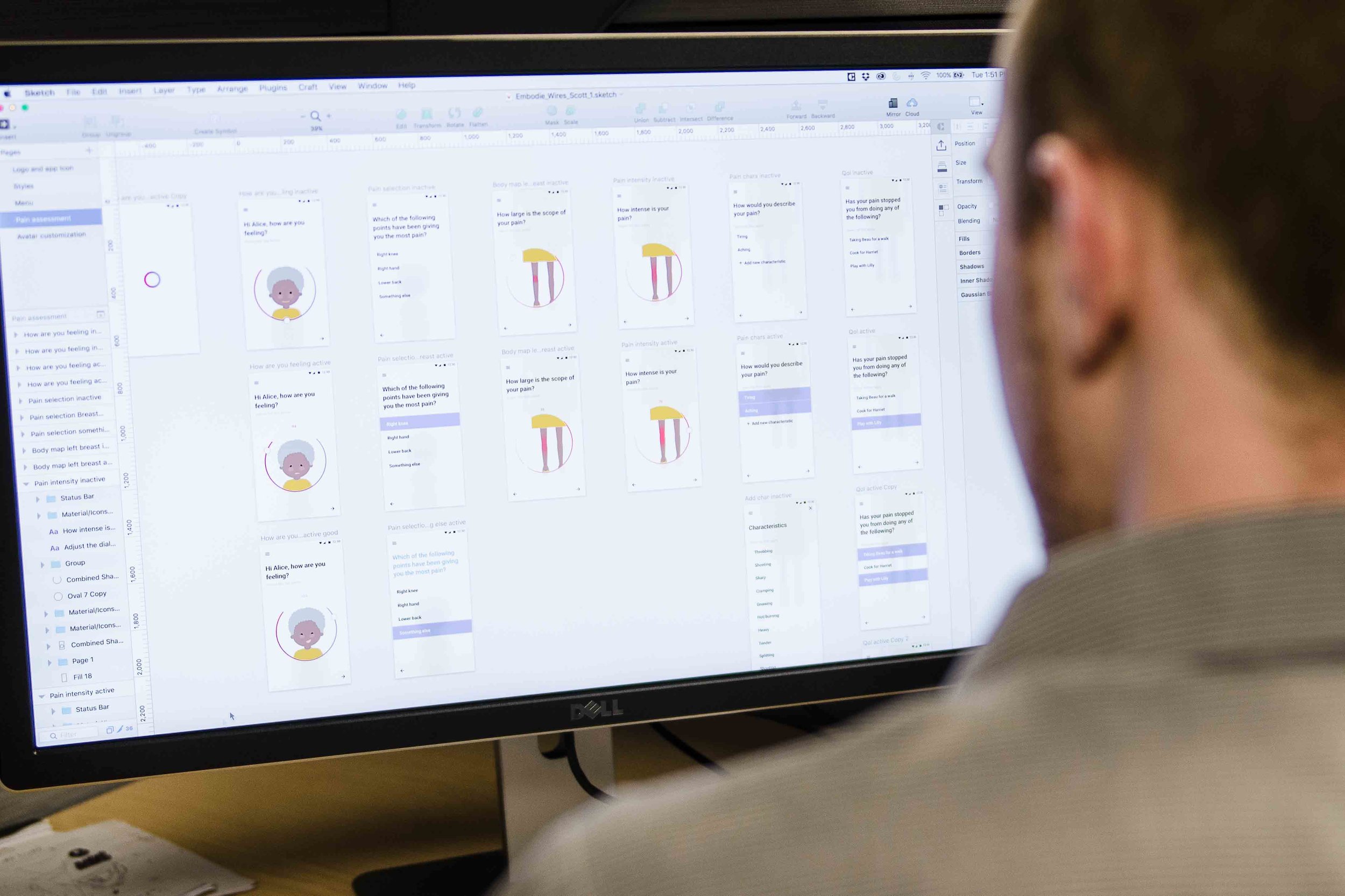

Fostering Human to Human Care
The human relationship is invaluable in medicine, but with more people in need and fewer to respond, these relationships have become increasingly difficult to grow and maintain. embodie is designed to help with this by alleviating some of the pressures of healthcare where the human relationship isn't as active, and enriching it where it is.

"Beneath all the wizardry of modern medicine, it's all about people."
— Aldo Doerner Rinaldi, MD Medical Director, Mount Auburn Hospital
Office
Partners Connected Health
Disciplines
Design Direction
Art Direction
UX/UI Design
Identity
Copy Writing
Research
RELATED